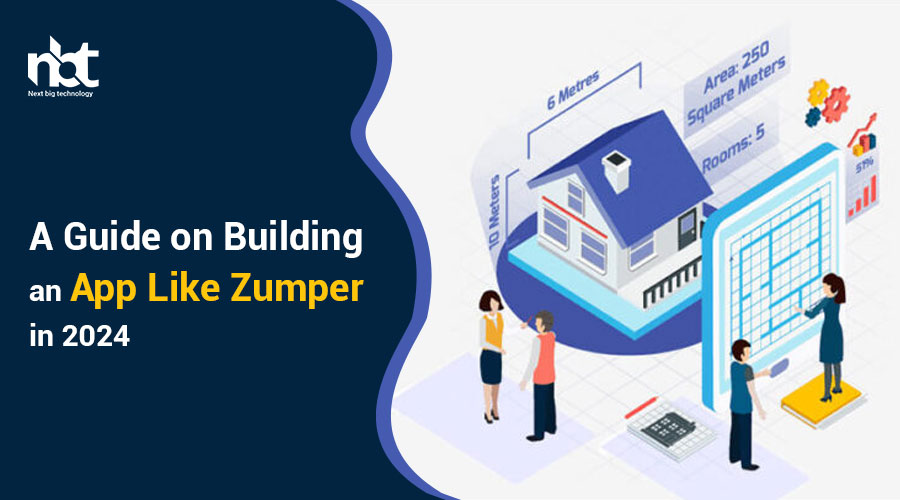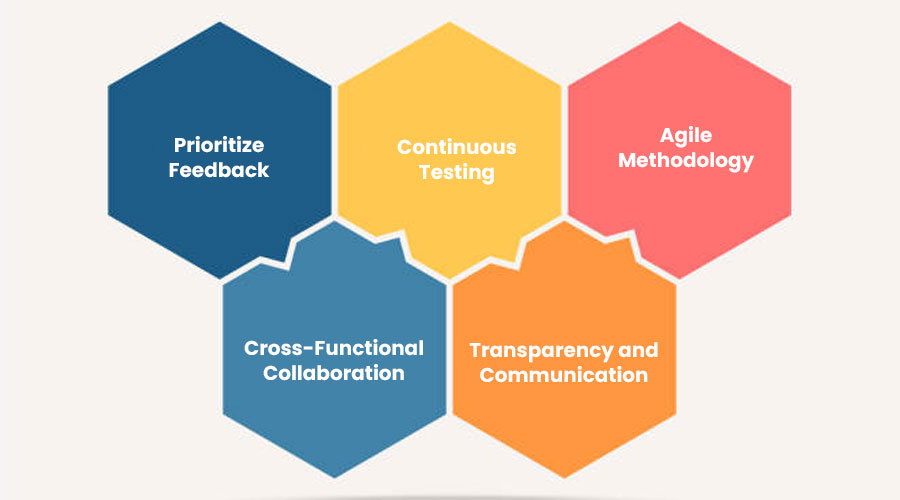Table of Contents
Understanding the Market Landscape
In the dynamic realm of business, understanding the market landscape is akin to possessing a compass in uncharted territory. It’s a fundamental step for any entrepreneur, strategist, or investor aiming to navigate the complex terrain of commerce successfully. In this article, we delve into what constitutes the market landscape, why it’s essential, and how to decipher its nuances effectively.
Defining the Market Landscape
The market landscape encompasses all facets of the environment in which a product or service operates. It includes competitors, consumers, industry trends, regulations, economic conditions, and technological advancements. Essentially, it’s the panoramic view of the market’s topography, presenting both opportunities and challenges.
Why It Matters
Understanding the market landscape is crucial for several reasons:
- Identifying Opportunities: By comprehending market dynamics, businesses can identify untapped niches, emerging trends, and gaps in the market, enabling them to capitalize on lucrative opportunities.
- Mitigating Risks: A thorough understanding of the market landscape helps in anticipating potential threats such as aggressive competitors, shifting consumer preferences, or regulatory changes, allowing businesses to proactively mitigate risks.
- Strategic Decision-Making: Armed with insights into the market landscape, organizations can make informed strategic decisions regarding product development, marketing campaigns, pricing strategies, and expansion plans, optimizing their chances of success.
- Staying Competitive: In a fiercely competitive market, staying ahead necessitates constant awareness of the landscape. By monitoring competitors’ moves, industry trends, and consumer behavior, businesses can adapt and innovate to maintain their competitive edge.
Deciphering the Landscape
Now that we understand the significance of the market landscape, let’s explore how to decode its intricacies effectively:
- Market Research: Conduct comprehensive market research to gather data on competitors, target demographics, industry trends, and regulatory frameworks. Utilize both primary (surveys, interviews, focus groups) and secondary (industry reports, market analysis) sources for a holistic understanding.
- SWOT Analysis: Perform a SWOT (Strengths, Weaknesses, Opportunities, Threats) analysis to assess internal capabilities and external factors influencing the business. This analysis provides valuable insights into the competitive positioning and areas for improvement.
- Consumer Insights: Dive deep into consumer behavior, preferences, and pain points through surveys, social media listening, and analytics tools. Understanding the needs and desires of the target audience is pivotal for crafting compelling value propositions.
- Competitor Analysis: Analyze competitors’ strategies, product offerings, pricing models, and marketing tactics to identify gaps and areas of differentiation. This intelligence can inform strategic decisions and help in positioning the brand effectively in the market.
- Monitoring Trends: Stay abreast of industry trends, technological advancements, and socio-economic shifts that could impact the market landscape. Subscribe to industry publications, attend conferences, and engage with thought leaders to stay ahead of the curve.
- Iterative Approach: The market landscape is not static; it evolves continuously. Therefore, adopt an iterative approach to market analysis, regularly updating your insights and strategies to adapt to changing dynamics.
Defining Your App’s Unique Selling Proposition
In today’s digital age, where the app market is saturated with countless offerings, standing out is not just desirable; it’s essential for survival. Defining your app’s Unique Selling Proposition (USP) is the cornerstone of a successful marketing strategy. Your USP is what sets your app apart from the competition and communicates its value proposition to potential users. In this article, we’ll explore the significance of defining your app’s USP and provide actionable tips for crafting one that resonates with your target audience.
Understanding the Importance of a USP
In a sea of similar apps, a strong USP acts as a beacon that attracts users and keeps them engaged. It answers the fundamental question: “Why should someone choose your app over others?” Your USP encapsulates the unique benefits and features that differentiate your app and make it indispensable to users. Without a compelling USP, your app risks being lost in obscurity, overshadowed by competitors who have effectively communicated their value proposition.
Identifying Your App’s Unique Attributes
To craft an effective USP, start by identifying what makes your app special. Conduct market research to understand your target audience’s needs, preferences, and pain points. Analyze your competitors to uncover gaps in the market and areas where your app can excel. Consider the following questions:
- What problem does your app solve?
- What features or functionalities distinguish your app from others?
- What benefits do users derive from using your app?
- What emotional appeal does your app evoke in users?
By answering these questions, you’ll gain valuable insights into the unique attributes of your app that can form the basis of your USP.
Crafting a Compelling USP
Once you’ve identified your app’s unique attributes, it’s time to craft a compelling USP that resonates with your target audience. Here are some tips to help you formulate a powerful USP:
- Be Clear and Concise: Your USP should be clear, concise, and easy to understand. Avoid jargon and technical language that may confuse users. Clearly communicate the primary benefit or advantage of your app in a single sentence.
- Focus on Benefits: Highlight the benefits that users will experience by using your app. Whether it’s saving time, enhancing productivity, or improving quality of life, emphasize how your app addresses the needs and desires of your target audience.
- Emphasize Uniqueness: Your USP should emphasize what sets your app apart from competitors. Whether it’s a unique feature, innovative technology, or superior user experience, make sure to highlight what makes your app special.
- Appeal to Emotions: Tap into the emotions of your target audience by highlighting the emotional benefits of your app. Whether it’s a sense of belonging, empowerment, or joy, evoke feelings that resonate with users on a deeper level.
- Test and Iterate: Once you’ve crafted your USP, test it with your target audience to gauge its effectiveness. Solicit feedback and iterate based on the insights you receive. Continuously refine your USP to ensure it remains relevant and compelling.
Mapping Out Essential Features and Functionality
In today’s digital age, where technology evolves at a rapid pace, mapping out essential features and functionality is crucial for businesses aiming to thrive in competitive markets. Whether you’re developing a software application, designing a website, or launching a new product, understanding the landscape of essential features and functionalities is akin to charting a course in uncharted waters. Let’s embark on this journey together, exploring the key elements that contribute to success in today’s dynamic business environment.
- User-Centric Design: At the heart of any successful venture lies a deep understanding of user needs and preferences. User-centric design entails putting the end-user at the forefront of the development process. By conducting thorough research, gathering user feedback, and employing intuitive design principles, businesses can create products and services that resonate with their target audience.
- Seamless User Experience (UX): A seamless user experience is paramount in today’s hyper-connected world. From intuitive navigation to responsive interfaces, every interaction should be designed to enhance user satisfaction and engagement. By prioritizing usability and accessibility, businesses can forge meaningful connections with their audience and foster long-term loyalty.
- Scalability and Flexibility: As businesses grow and evolve, so too should their technological infrastructure. Scalability and flexibility are essential features that enable organizations to adapt to changing demands and market trends. Whether it’s accommodating increased traffic or integrating new functionalities, scalable solutions lay the foundation for sustained growth and innovation.
- Security and Privacy: With cybersecurity threats on the rise, prioritizing security and privacy is non-negotiable. From robust encryption protocols to stringent access controls, safeguarding sensitive data is paramount in building trust and credibility with users. By adhering to industry best practices and regulatory standards, businesses can mitigate risks and protect their reputation.
- Analytics and Insights: Data-driven decision-making is a cornerstone of modern business strategy. By leveraging analytics tools and gathering actionable insights, businesses can gain valuable intelligence into user behavior, market trends, and performance metrics. Armed with this information, organizations can make informed decisions that drive growth and profitability.
- Integration and Compatibility: In today’s interconnected ecosystem, seamless integration and compatibility are essential for maximizing efficiency and productivity. Whether it’s integrating with third-party platforms or ensuring cross-device compatibility, interoperability is key to delivering a cohesive user experience. By fostering interoperability, businesses can streamline workflows and reduce friction for users.
- Continuous Improvement: In a landscape defined by rapid innovation, the pursuit of continuous improvement is essential for staying ahead of the curve. By soliciting feedback, monitoring performance metrics, and iterating on existing features, businesses can evolve their offerings to meet the evolving needs of their audience. Embracing a culture of continuous improvement fosters innovation and ensures long-term relevance in a competitive market.
Implementing Advanced Search and Filtering Options
Post-Launch Optimization: Gathering Feedback and Iterating for Improvement
In the fast-paced world of business and technology, launching a product or service is just the beginning of the journey towards success. The real challenge lies in optimizing and refining your offering based on user feedback. Post-launch optimization is crucial for staying competitive and ensuring long-term viability. In this article, we’ll delve into the importance of gathering feedback and iterating for improvement after a product or service launch.
Understanding Post-Launch Optimization: Post-launch optimization refers to the process of collecting feedback from users and stakeholders, analyzing it, and implementing necessary changes to enhance the product or service. It’s a continuous cycle aimed at improving user satisfaction, increasing efficiency, and maximizing profitability.
Gathering Feedback:
- User Surveys and Questionnaires: Designing surveys and questionnaires tailored to your target audience can provide valuable insights into their experiences, preferences, and pain points. Utilize platforms like Google Forms or SurveyMonkey to easily create and distribute surveys.
- User Interviews: Conducting one-on-one interviews with users allows for in-depth exploration of their thoughts and experiences. Prepare open-ended questions to encourage detailed responses and uncover valuable insights.
- Analyzing User Behavior: Utilize analytics tools such as Google Analytics or Hotjar to track user interactions with your product or service. Analyze metrics like bounce rate, session duration, and conversion rates to identify areas for improvement.
- Social Media Monitoring: Monitor social media channels for mentions, reviews, and comments related to your product or service. Pay attention to both positive feedback and criticism to understand user sentiment and identify areas for enhancement.
Iterating for Improvement:
- Prioritize Feedback: Prioritize feedback based on its impact and feasibility. Focus on addressing critical issues and high-impact suggestions first to maximize the effectiveness of your iterations.
- Continuous Testing: Implement changes in small increments and conduct A/B testing to evaluate their effectiveness. Monitor key metrics to measure the impact of each iteration and iterate further based on the results.
- Agile Methodology: Adopt an agile approach to development, allowing for flexibility and responsiveness to changing requirements and user feedback. Break down tasks into smaller iterations or sprints, enabling quick iterations and continuous improvement.
- Cross-Functional Collaboration: Foster collaboration between different teams, including product development, marketing, and customer support, to ensure alignment and holistic optimization efforts.
- Transparency and Communication: Keep stakeholders informed about the optimization process and the rationale behind each iteration. Encourage transparency and open communication to foster trust and support for ongoing improvement initiatives.
Top App Like Zumper Companies
Are you on the hunt for the perfect apartment but feeling overwhelmed by the options out there? Zumper might be your go-to app, but there are other fantastic alternatives worth exploring. Whether you’re looking for a user-friendly interface, extensive listings, or unique features, these top Zumper alternatives have got you covered.
-
-
Next Big Technology:

Focus Area
- Mobile App Development
- App Designing (UI/UX)
- Software Development
- Web Development
- AR & VR Development
- Big Data & BI
- Cloud Computing Services
- DevOps
- E-commerce Development
Industries Focus
- Art, Entertainment & Music
- Business Services
- Consumer Products
- Designing
- Education
- Financial & Payments
- Gaming
- Government
- Healthcare & Medical
- Hospitality
- Information Technology
- Legal & Compliance
- Manufacturing
- Media
-
- Rent.com: Rent.com simplifies the apartment hunting process with its user-friendly interface and comprehensive listings. You can browse through apartments, houses, condos, and townhomes, all with detailed descriptions and high-quality photos. The platform also offers helpful resources such as moving tips and budget calculators to streamline your search.
- Trulia Rentals: Backed by the renowned real estate website Trulia, Trulia Rentals is a go-to destination for renters seeking a seamless experience. You can explore a wide range of rental properties, from apartments to single-family homes, and refine your search with filters like pet-friendliness and lease duration. Additionally, Trulia Rentals provides neighborhood insights and crime maps to help you make informed decisions.
- HotPads: If you’re looking for a more localized approach to apartment hunting, HotPads is an excellent choice. This app specializes in rental properties and offers interactive maps to visualize listings in your desired area. You can set up alerts to stay updated on new listings and save your favorite properties for future reference. HotPads also provides valuable information about neighborhoods, schools, and transit options.
- PadMapper: PadMapper stands out for its innovative map-based interface, which allows you to explore rental listings geographically. You can view properties overlaid on a map and filter them based on criteria like price range and number of bedrooms. PadMapper aggregates listings from various sources, including Craigslist and management companies, providing you with a comprehensive selection to choose from.
FAQs On App Like Zumper
Are you intrigued by the concept of Zumper or considering using it but have a myriad of questions swirling in your mind? You’re not alone. Zumper, a popular platform for finding rental properties, often raises a plethora of queries among users. To alleviate your concerns and provide clarity, let’s delve into some frequently asked questions about apps like Zumper.
What is Zumper, and how does it work? Zumper is a user-friendly platform designed to streamline the process of finding rental properties. It aggregates listings from landlords, property managers, and brokers across the United States and Canada, allowing users to browse through a vast database of available apartments, houses, condos, and more. Through a simple interface, users can filter listings based on their preferences, such as location, price range, number of bedrooms, and amenities.
Is Zumper free to use? Yes, Zumper is free for renters. You can download the app or visit the website and start searching for rental properties without incurring any charges. Zumper generates revenue through partnerships with property managers and landlords who pay to list their properties on the platform.
Can I trust the listings on Zumper? Zumper strives to provide accurate and up-to-date listings to its users. However, as with any online marketplace, it’s essential to exercise caution and conduct due diligence when exploring listings. Zumper implements various measures to verify the legitimacy of listings, such as requiring landlords and property managers to provide valid contact information and conducting regular quality checks. Additionally, user reviews and ratings can offer insights into the reliability of listings and the experiences of previous renters.
Does Zumper offer any additional features or services? In addition to property listings, Zumper offers several features to enhance the rental search experience. These include:
- Saved Searches: Users can save their search criteria to receive notifications when new listings matching their preferences become available.
- Map View: The platform provides a map view option, allowing users to visualize available properties in their desired location and explore neighborhood amenities.
- Rental Application: Some listings on Zumper allow renters to submit rental applications directly through the platform, streamlining the application process.
- Zumper Select: Zumper Select is a premium service that offers personalized assistance from rental experts, including property tours and application support, for a fee.
Is Zumper available in my area? Zumper covers a wide range of cities and regions across the United States and Canada. However, the availability of listings may vary depending on your location. Before using Zumper, you can check if your city or area is included in their coverage by visiting their website or contacting their support team.
How can I contact Zumper for assistance? If you have any questions or encounter issues while using Zumper, you can reach out to their customer support team for assistance. Zumper provides multiple channels for contacting support, including email, phone, and in-app messaging. Their dedicated support staff are available to help resolve any inquiries or concerns you may have.






















